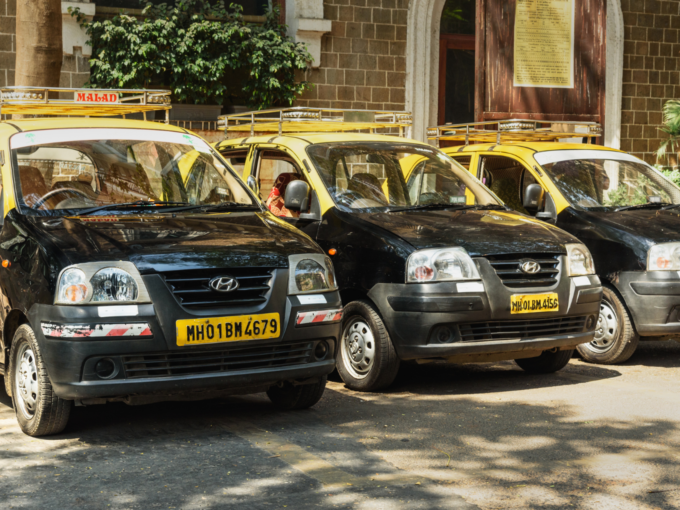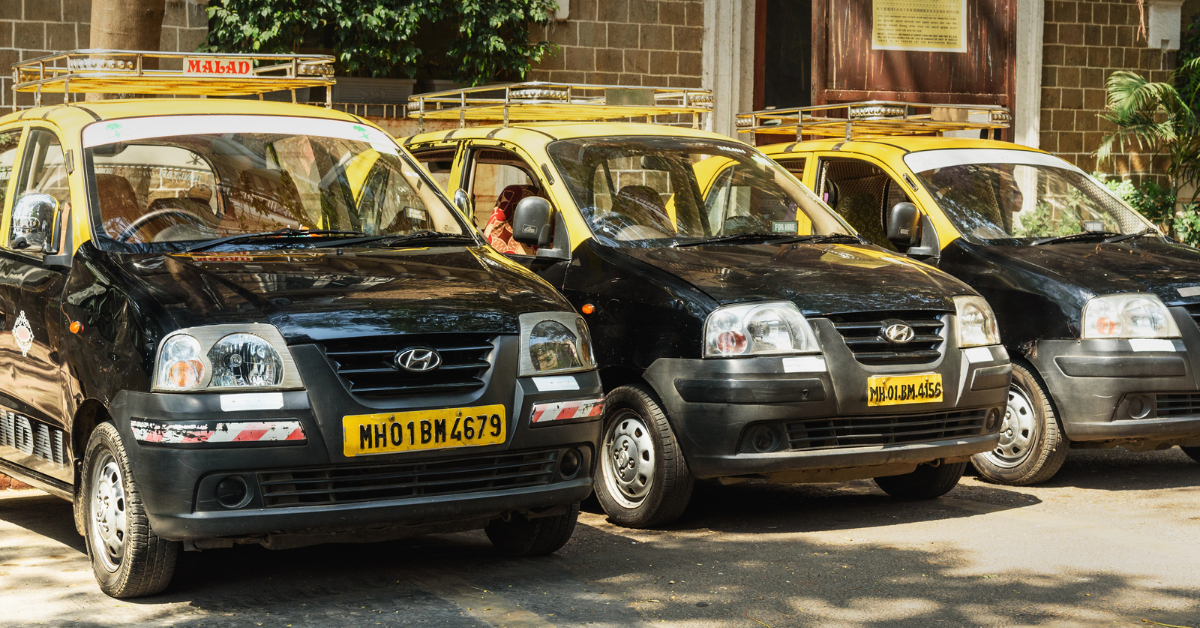As of now, 5K traditional (black and yellow) taxis are registered on Uber but only one-fifth of them are active on its platform
Uber had previously started this experiment in 2017 but scaled it down when the pandemic hit the nation
Uber is aiming to get more taxi drivers in Mumbai active on its platform to increase the fleet of available cars and also, offer listed taxis that charge RTO approved rates from the Uber users

Cab aggregator Uber India has resumed the addition of Mumbai’s iconic kaali-peeli (black and yellow) taxis on its platform. The kaali peeli cabs can be booked on Uber in some parts of Mumbai and will run as per the RTO approved rates.
As of now, 5K traditional (black and yellow) taxis are registered on Uber, but only one-fifth of them are active on its platform. While autos, bikes and cabs are operational at a very large scale in Mumbai, the city’s pièce de résistance has faced a major speedbump owing to increased fare prices amid fuel prices hike.
A source told Inc42, “During the pandemic, Uber faced major financial loss that it has not experienced in any of the previous years. To cover the losses, it increased car fares but meanwhile, reduced commission of cab drivers.”
Earlier on, Uber was investing heavily to establish itself in the Indian car-hailing industry. It was spending a huge portion on marketing and enhancing customers’ experience. At the same time, it was paying equal attention to drivers by offering hefty commissions. After securing its hold in the Indian market, Uber reduced commissions and simultaneously spiked cab fares for the general public.
The source quoted above said, “Another shift in cab drivers is seen as oodles of drivers that were associated with Uber for years completed their vehicles’ EMIs recently and thus ceased working with Uber post-pandemic.”
At present, Uber is reportedly aiming to get more taxi drivers in Mumbai active on its platform and also, offer government-listed affordable kaali peeli taxis that charge RTO approved rates from the Uber users.
Here’s How The Project Will Differ From Uber’s Modus Operandi
Under this pilot project, kaali peeli taxi drivers that have registered with Uber will continue to follow local tariff rate cards approved by the government. Meanwhile, such drivers can earn additional income from the Uber app, although the rates will differ.
Besides cab book service, Uber presently offers a slew of services from package delivery to inter-city transport services to the users in India.
Uber had started this experiment in 2017 but scaled it down when the pandemic hit the nation while Ola onboarded kaali peeli taxis much earlier to its app.
Back in 2014, Ola allowed customers to book kaali peeli taxis through its app. During that time, the app was working as a booking interface and customers had to settle the fare with the taxi driver.
In March 2020, when the pandemic struck, the Mumbai government limited kaali peeli cabs’ operations to control the spread of COVID.
Securing Its Hold In The Indian Market
Uber is currently experimenting similar partnerships globally too. Recently, it announced that it would list all yellow taxis in New York on its app. Under this deal, the cab aggregator joined hands with two taxi companies – Curb and CMT — to allow riders to book taxis on the Uber app. The cab aggregator has made similar partnerships in South Korea, Spain, Germany, and some Japanese cities.
Uber’s new deal with New York’s yellow cabs will be operational by the end of June 2022. The cab fare will be based on Uber’s pricing and policies incorporating price surge.
In the UK, too, the ride-hailing app is planning to offer buses, trains, cars, and plane rentals. After its success, the project is likely to be expanded to other countries as well.
In September 2021, Uber launched Corporate Shuttle in India to ease commuting for employees to their workplaces. Corporate Shuttle was introduced after the Gurugram-based bus aggregator Shuttle closed its operations and later, got acquired by Chalo.
In spite of Uber mulling plans to secure its position in the market, it is yet not addressing key issues that are prevailing in the Indian ride-hailing segment. According to a LocalCircles’ report, 70% of riders using Uber, Ola and other ride-hailing apps face problems with cab riders as they mostly cancel rides after finding the destination and, if the mode of payment is online. The survey received over 65,000 responses from consumers in 324 districts on taxi aggregators.
While Ola addressed this pain point back in December 2021 by introducing a feature for Ola drivers to see customers’ location and mode of payment before accepting any ride, Uber has still not come up with any plan to reduce cancellations and inconvenience caused to cab riders on a regular basis.
That’s one side, but overall, both Ola and Uber have been under constant public scrutiny for poor service and driver related issues.
A recent survey by Inc42 and Clootrack found that ride cancellation, user experience on the app, customer care, surge pricing and booking experience of the users were major problems faced by Ola and Uber’s users. The survey analysed 21,573 reviews on Google Play Store and Apple App Store for Uber and Ola. According to the survey findings, Uber has been perceived as being safer than Ola, and was scored higher on the likelihood of recommendation score.










